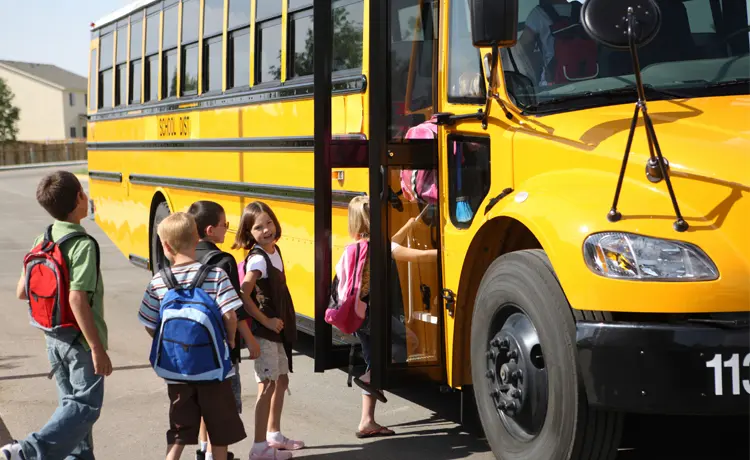Parents send their kids to school to learn, play and build lasting friendships. But, sadly, bullying has become a reality in many of our schools' hallways, playgrounds and school buses. That’s right – at least 10% of children have reported being bullied on the school bus, before they ever even walk through school doors.
Educators and community leaders can use the information below to raise awareness about school bus bullying and to help parents, bus drivers and students take the right steps to prevent this growing epidemic.
What Is School Bus Bullying?
School bus bullying can happen in many ways. Some examples include:- A child being told where to sit by another child.
- An older child picking on a younger child.
- A child being tripped or slapped while going up the aisle.
- Name-calling or ridiculing.
Reasons for School Bus Bullying
Unfortunately, the school bus is prime real estate for bullies – there is minimal supervision compared to in the schoolyard. The bus driver is often the only adult on the school bus and is focused on the road and making sure kids to get to school safely. This gives students the opportunity to bully without consequences.Signs of School Bus Bullying
Bullying on the bus is very similar to bullying on school grounds, and some of the signs are the same. They include:- Unexplained injuries.
- Missing personal items.
- Moodiness or anxiety.
- Fear of going to school.
- Frequent bad dreams or trouble sleeping.
- Fear of going to school or of riding the bus.
- Deliberately trying to miss the bus.
- Asking for daily rides to school or finding reasons to ride with friends instead of taking the bus.
How Can I Help My Child?
If you suspect your child is being bullied or if they bring it up, consider these tips to help them:- Empathize with your child. Tell them the following:
- Bullying is wrong.
- It is not their fault.
- You are glad they had the courage to tell you about it.
- Work with your child to document all bullying incidents.
- Help your child develop strategies to handle bullying, suggesting and rehearsing responses to help them gain confidence.
- Be persistent. Bullying cannot be resolved overnight, so talk with your children regularly to see whether the bullying has stopped.
- Get outside help, if necessary. If the bullying persists or escalates, speak with the bus driver, the bully’s parents, school authorities and/or the police. You need to take active steps to confront the problem because children often perceive passive approaches as willful inaction or helplessness.
Working with the School
Parents are often reluctant to report bullying to school officials, but they should never be afraid to ask for help. In fact, Federally funded schools are obligated to address all cases of bullying, especially if they violate civil rights laws. The following tips can help you open the lines of communication:- Know the school policies. Check the student handbook for standards that may help resolve the situation.
- Set up an appointment to talk with a teacher or school counselor as well as with members of the school administration. These professionals can intervene and help your children cope with the stress of being bullied.
